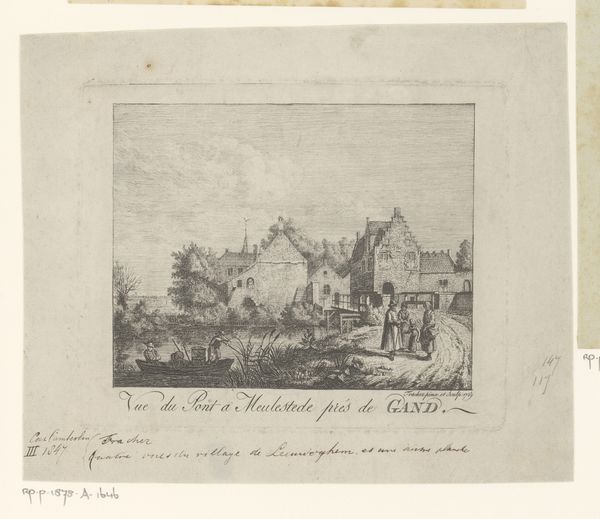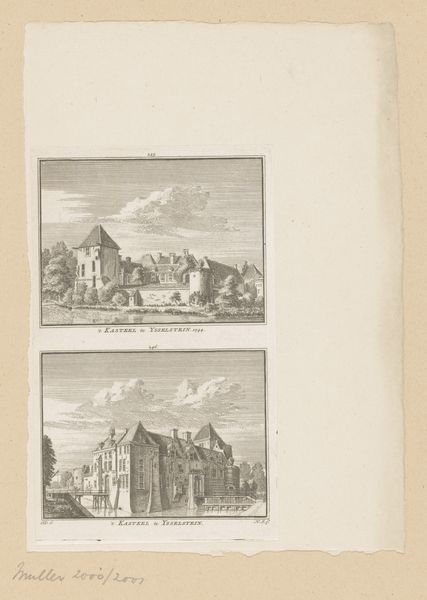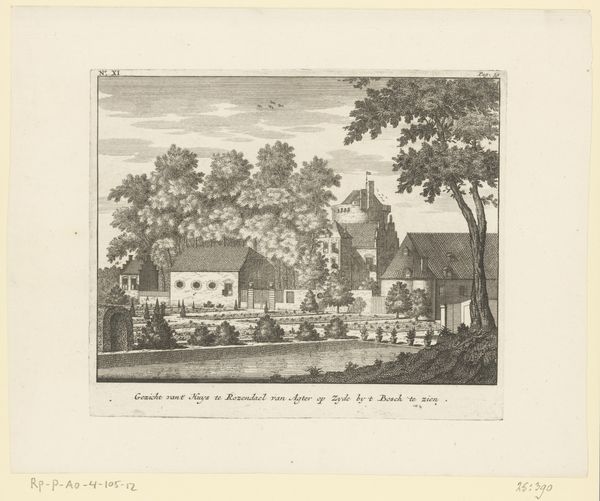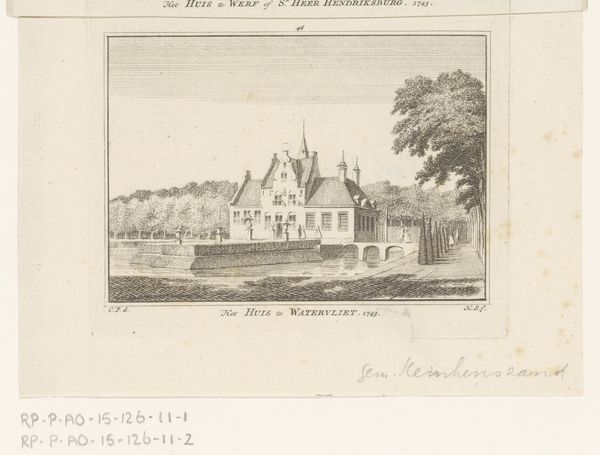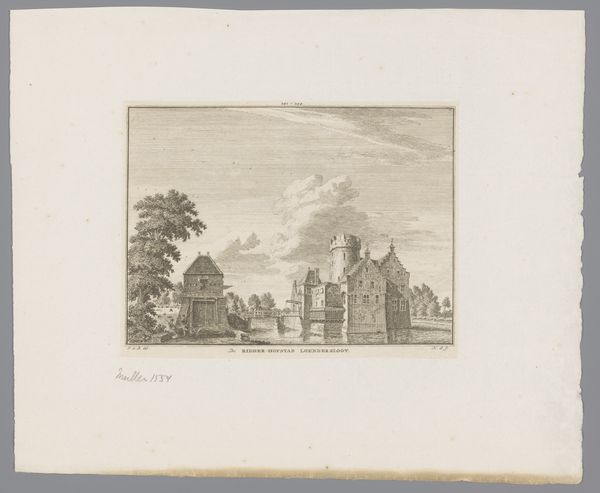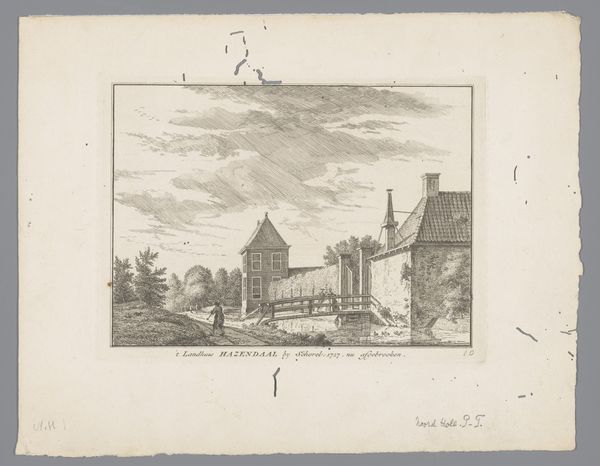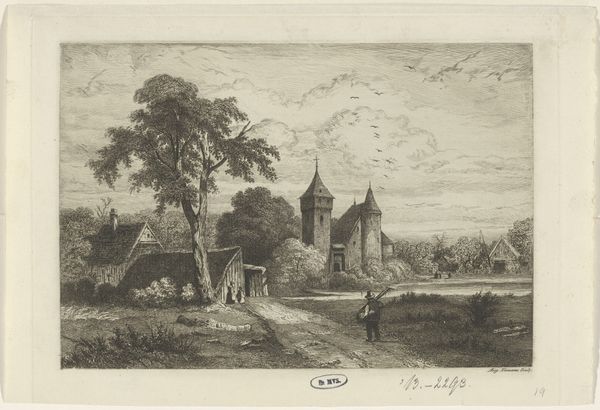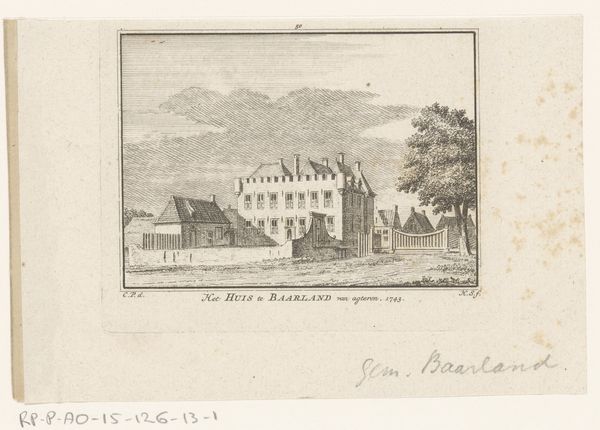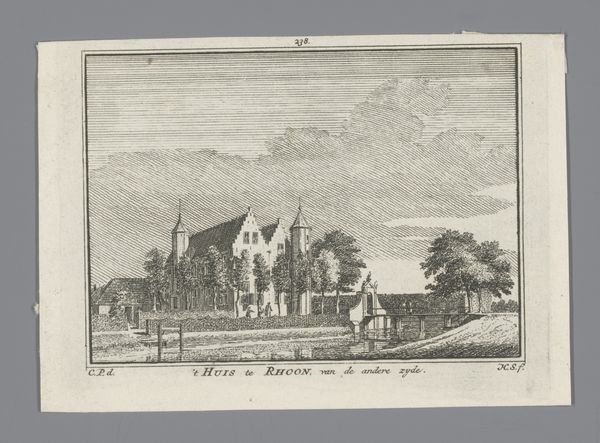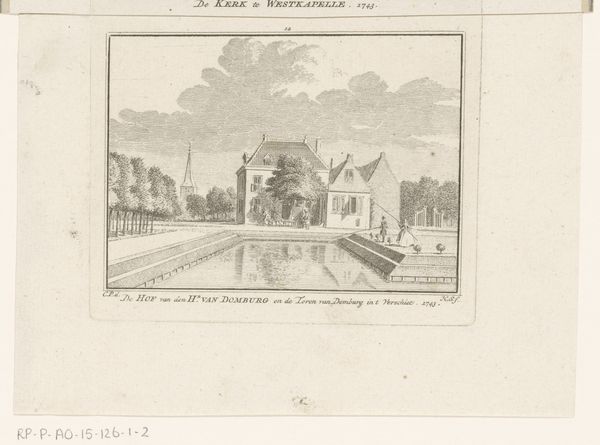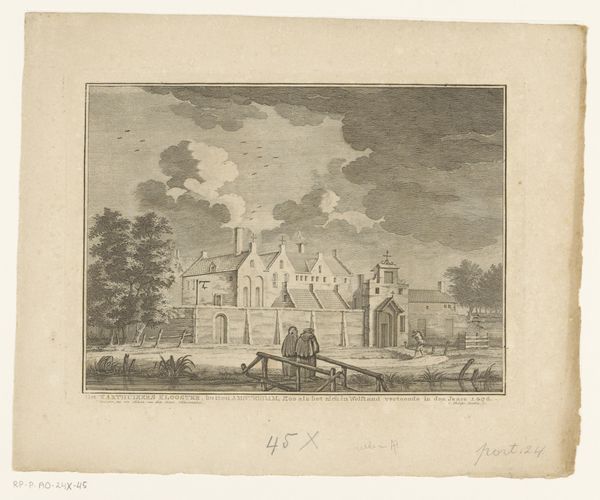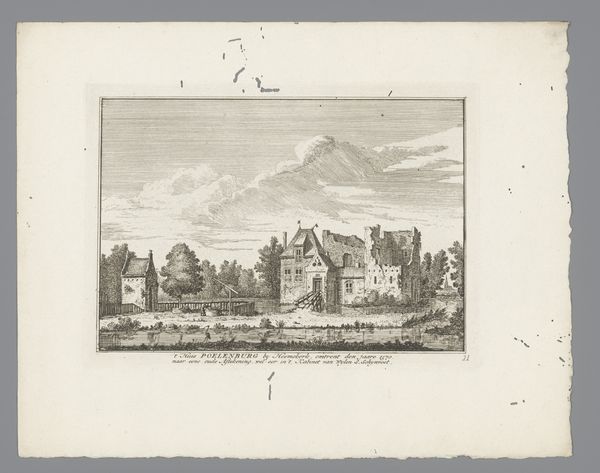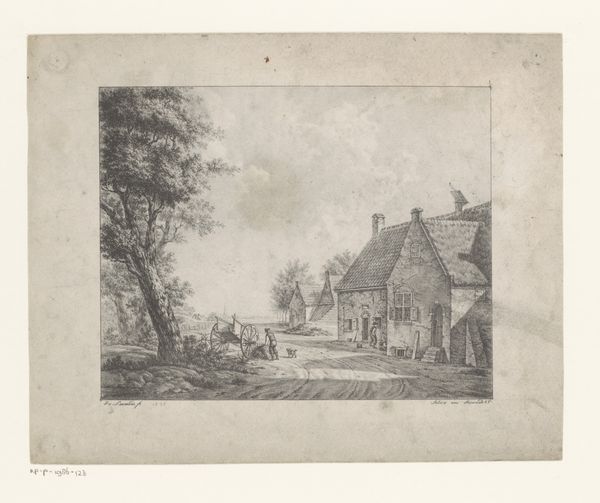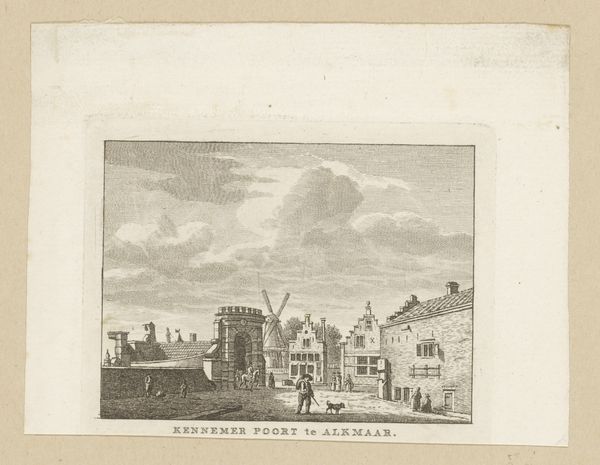
Dimensions: height 83 mm, width 106 mm
Copyright: Rijks Museum: Open Domain
This etching from 1745 by Hendrik Spilman offers a tranquil view of Huis Waterlooswerve. Observe the horse and rider in the foreground, positioned before the house and barn. The horse motif carries rich cultural weight. Since antiquity, the horse has been a symbol of power, nobility, and virility. Equestrian statues of emperors served as propaganda, asserting dominance. Similarly, we might see a connection to the ancient Greek centaurs, figures that embodied primal instincts, untamed and half-human. Through time, the horse’s symbolism has adapted, appearing on coats of arms and flags of nations. In dreams, it might symbolize uncontrolled libido or the drive to succeed. The horse and rider, in particular, speak to the balance between control and instinct, a theme echoed in art throughout history. Their presence invokes not just a scene, but a sense of temporal continuity, a collective memory resonating with the viewer on a deeply subconscious level.
Comments
No comments
Be the first to comment and join the conversation on the ultimate creative platform.
